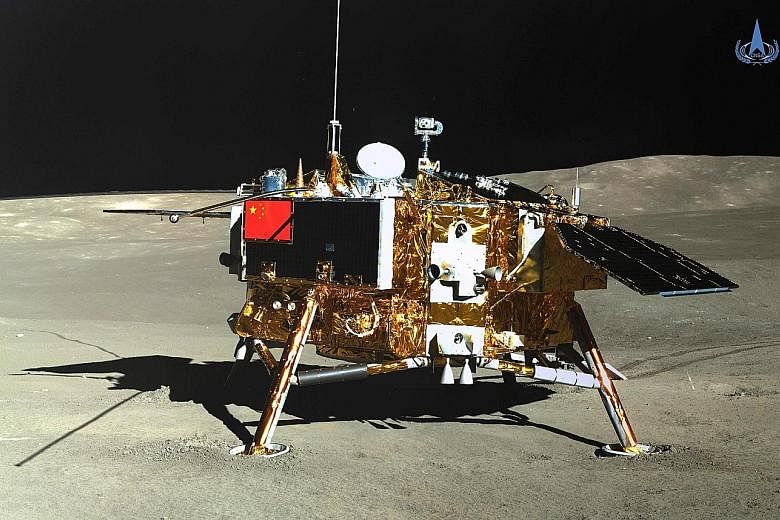BEIJING • In Beijing's Beihang University, imaginations of China's future lunar explorations are stored in three metal tanks.
In the interconnected cabins, squirming larvae known as yellow mealworms are precious, if unpalatable, meat dishes, and vegetables come from two lush gardens that feed on the by-products of human metabolism, including carbon dioxide and excrement.
The 160 sq m facility, which draws its name Yuegong-1, or Lunar Palace 1, from the Chinese legend of Moon goddess Chang'e, is testing the possibility of having a manned base on the Moon.
Every animal and plant species entering the cabins is handpicked by scientists. Strawberries are selected as the sole fruit plant as most parts are edible. Mealworms are raised as a source of animal protein because of the unlikelihood of humans forming emotional bonds with them.
As supplying materials in outer space is extremely expensive, the bioregenerative life support system (BLSS) creates a closed environment where most substances necessary for human life, like water, oxygen and food, can be regenerated through the biochemical processing of waste. Professor Liu Hong, chief designer of the BLSS of Yuegong-1, said: "The nearest application of our technology will be in a lunar base. So far, the system has achieved 98 per cent self-sufficiency, which is good enough for a base on the Moon, or even on Mars."
Flying to the Moon used to be a distant dream for China, a newcomer in the space club. Its first satellite, Dongfanghong-1, lifted off in 1970. Its first Moon orbiter Chang'e-1 was launched in 2007, nearly half a century after the former Soviet Union and the US sent theirs to fly by the Moon.
But the past decades have seen China speedily catching up in outer space exploration. Earlier this year, Chang'e-4 became the world's first probe to soft-land on the far side of the Moon.
In April, the China National Space Administration said it aimed to build a scientific research station in the south polar region of the Moon and realise a manned lunar exploration mission in about 10 years.
Last year, two groups of eight volunteers completed a 370-day test-living in the lab, setting a new world record for the longest stay in such a cabin. Prof Liu said: "Our next goal is to adjust this system so it can work in a lunar environment... We hope to create a miniature system and run it on a space station."
XINHUA

